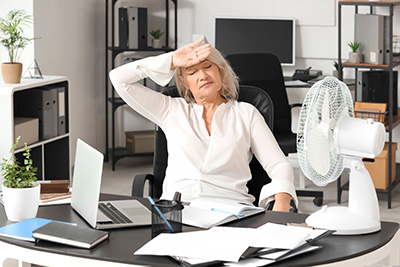
A hot flash is a feeling of warmth that spreads over the body typically beginning, and most strongly felt, in the head and neck area. Hot flashes are a characteristic symptom of perimenopause and menopause but they may occasionally result from other medical conditions. Not all women experience hot flashes and many normally menstruating women experience hot flashes years prior to the cessation of menstrual periods. While it is true that hot flashes are more common in women, hot flashes can occur in men too.
About 75 percent of women experience hot flashes at some point in the menopausal transition. Hot flashes are brief, lasting from about 30 seconds to a few minutes. The frequency of hot flashes can vary from a few times each week to constant throughout the day. Hot flashes are frequently associated with other symptoms including redness of the skin known as flushing, excessive perspiration, chills, rapid heartbeat, nausea, dizziness, anxiety, headache, weakness, or a feeling of suffocation. Hot flashes at night accompanied by sweating are called, not surprisingly, “night sweats,” and may interfere with sleep.
In women, hot flashes are thought to be the result of a hormonal imbalance, usually low estrogen. However, they can also be due to “relative estrogen deficiency,” a condition in which the estrogen level appears low because of other factors, such as excessive progesterone. In men, hot flashes are due to declining levels of testosterone. In men, hot flashes are due to declining levels of testosterone.